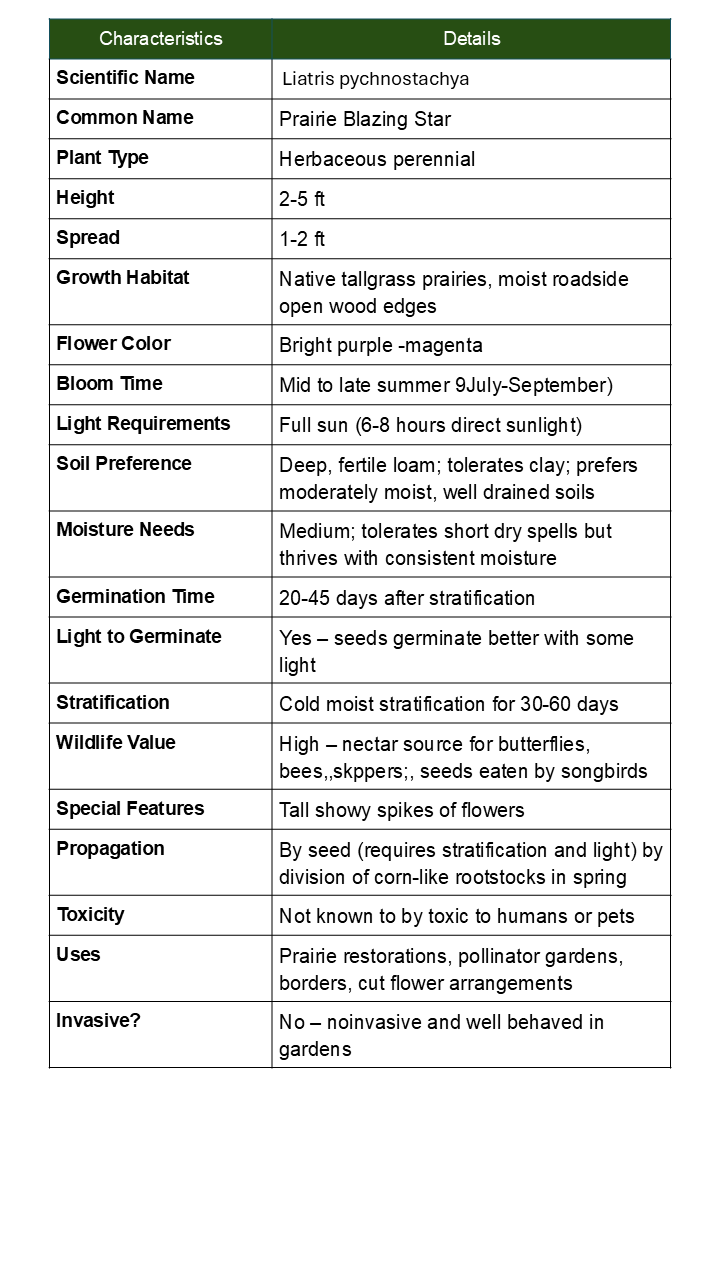Prairie Blazing Star Seeds - Native Wildflower
Regular price$4.00
/
Tax included.
No reviews
Description
Transform Your Garden with Prairie Blazing Star Seeds
Liatris pycnostachya, commonly called prairie blazing star or cattail gayfeather, is a stunning native wildflower that brings vibrant purple beauty to your landscape. This striking perennial creates dramatic vertical interest with its tall, showy flower spikes that bloom from top to bottom in brilliant purple-magenta hues.
Why Choose Prairie Blazing Star?
- Pollinator Magnet: Attracts butterflies, bees, and beneficial insects
- Low Maintenance: Drought-tolerant once established
- Native Beauty: Authentic tallgrass prairie wildflower
- Long Blooming: Spectacular display from midsummer through early fall
- Versatile Growth: Thrives in full sun, tolerates clay soil and seasonal wetness
Perfect For:
✓ Prairie restoration projects
✓ Pollinator and butterfly gardens
✓ Native plant landscapes
✓ Rain gardens and naturalized areas
✓ Cut flower gardens
Growing Details: Reaches 2-5 feet tall with narrow, grass-like foliage forming dense clumps. Native to central and eastern North America's tallgrass prairies. Ideal for gardeners seeking authentic native plants that support local ecosystems while providing stunning visual impact.


